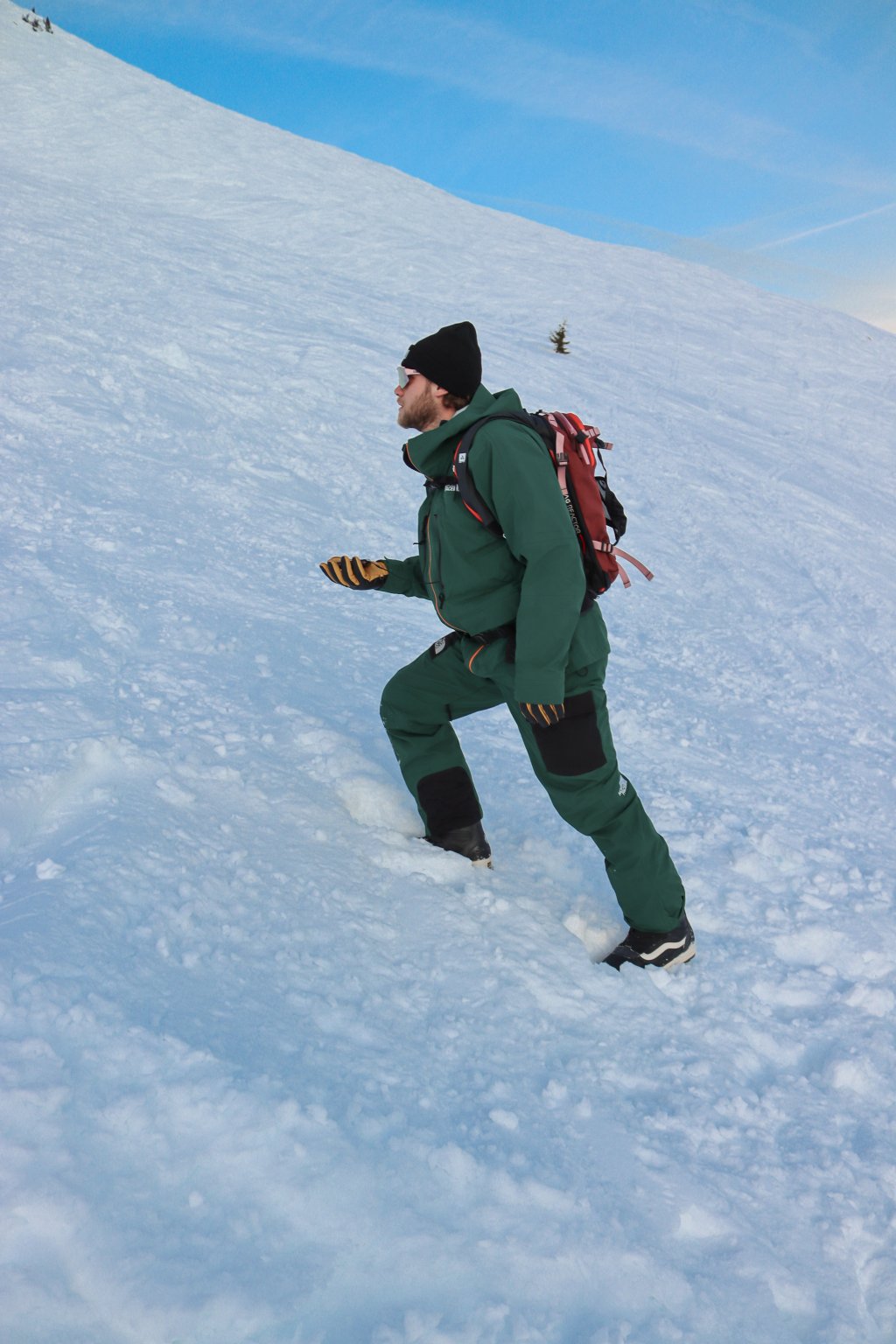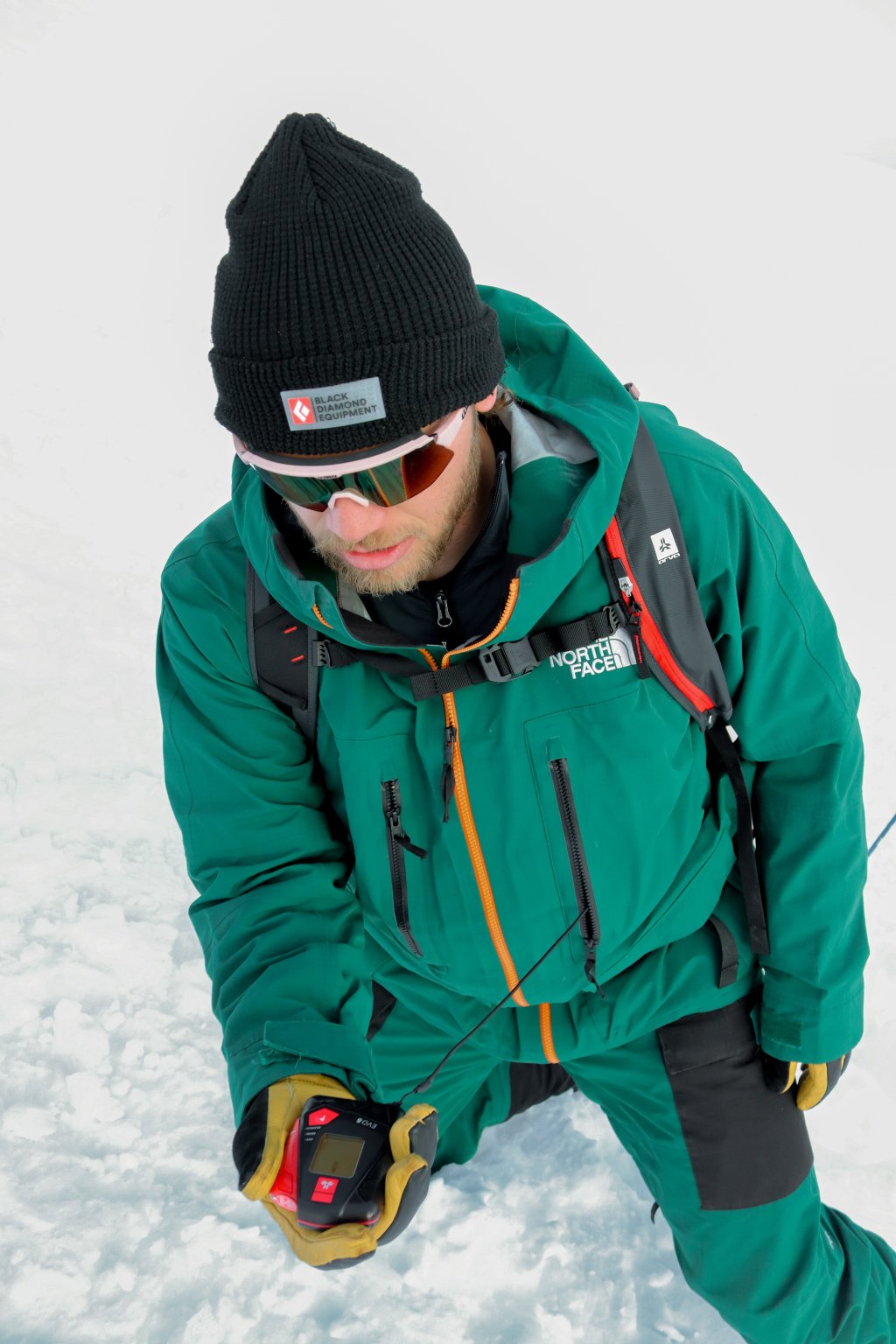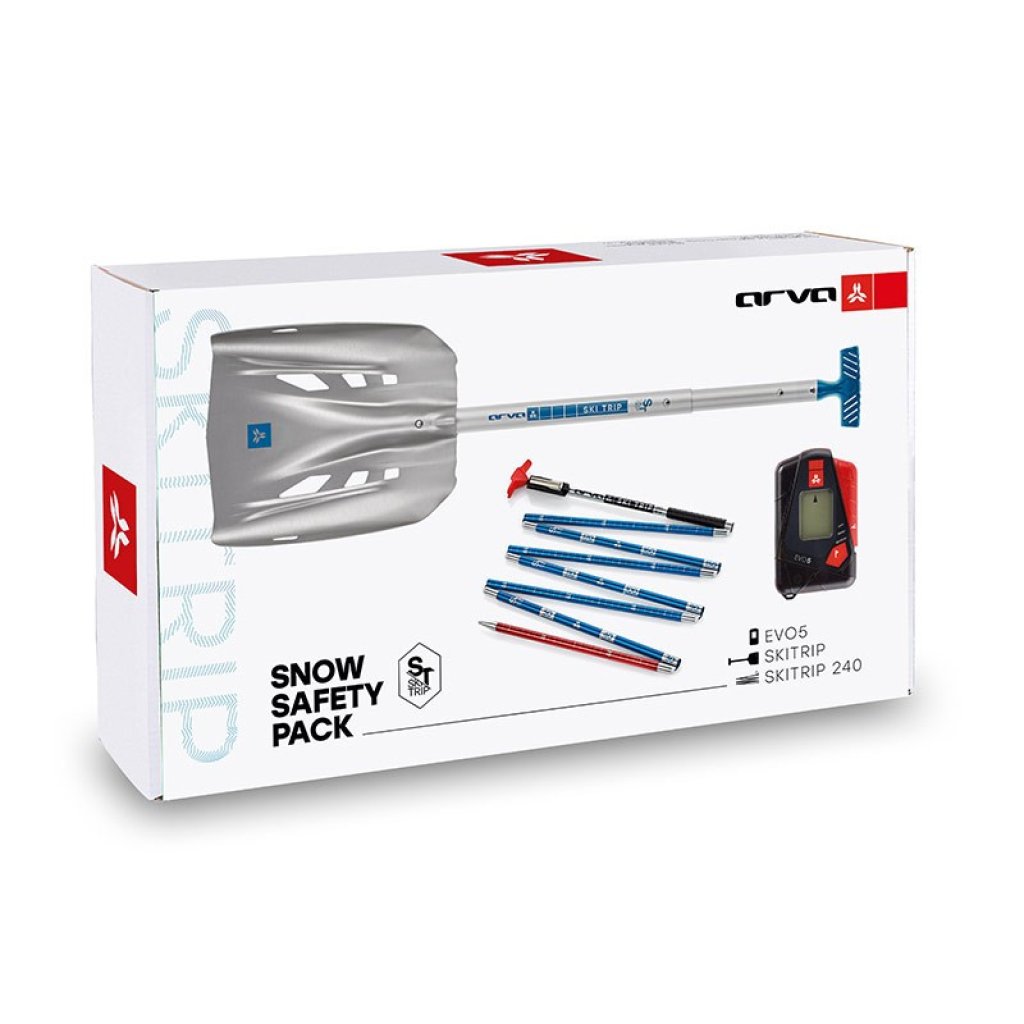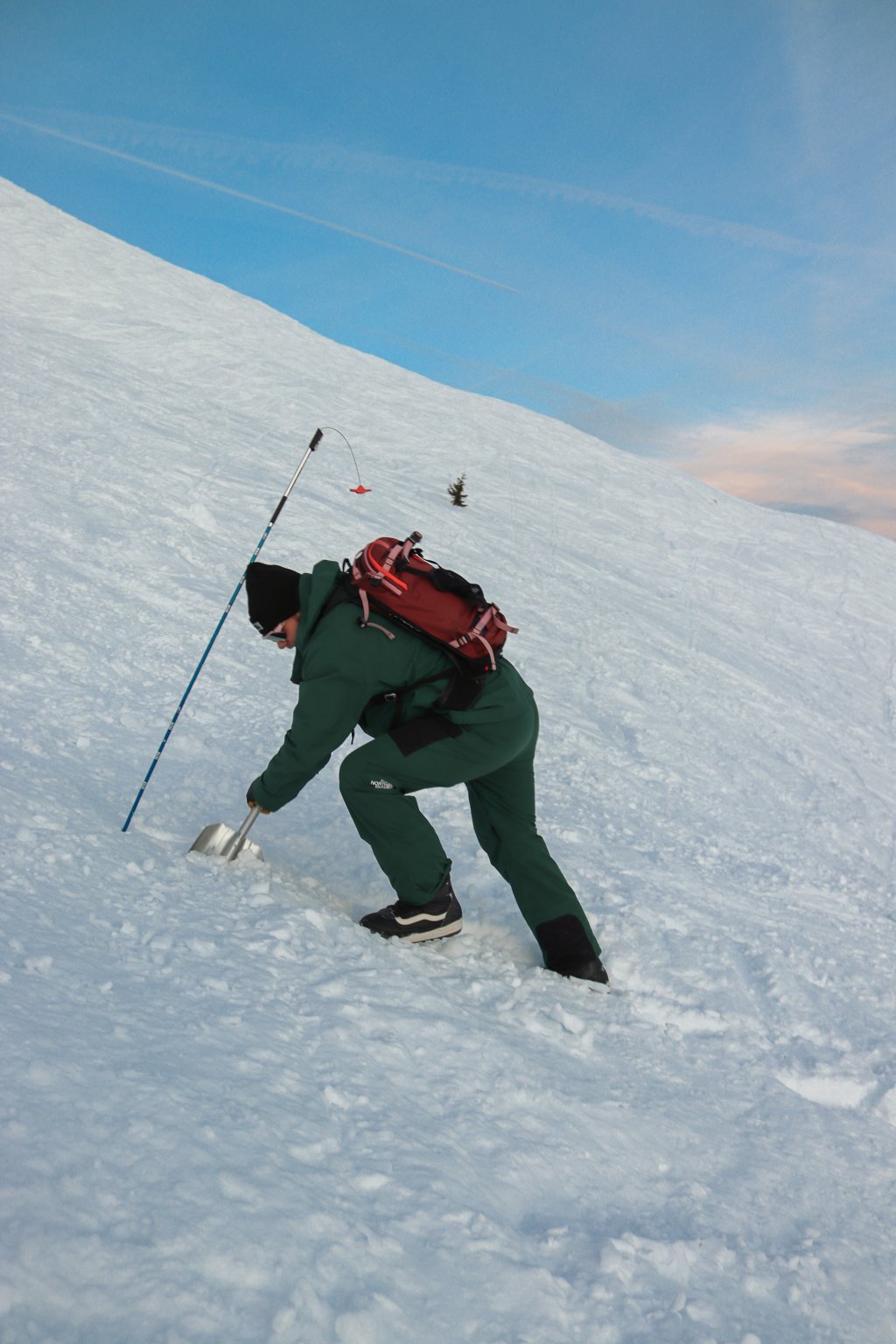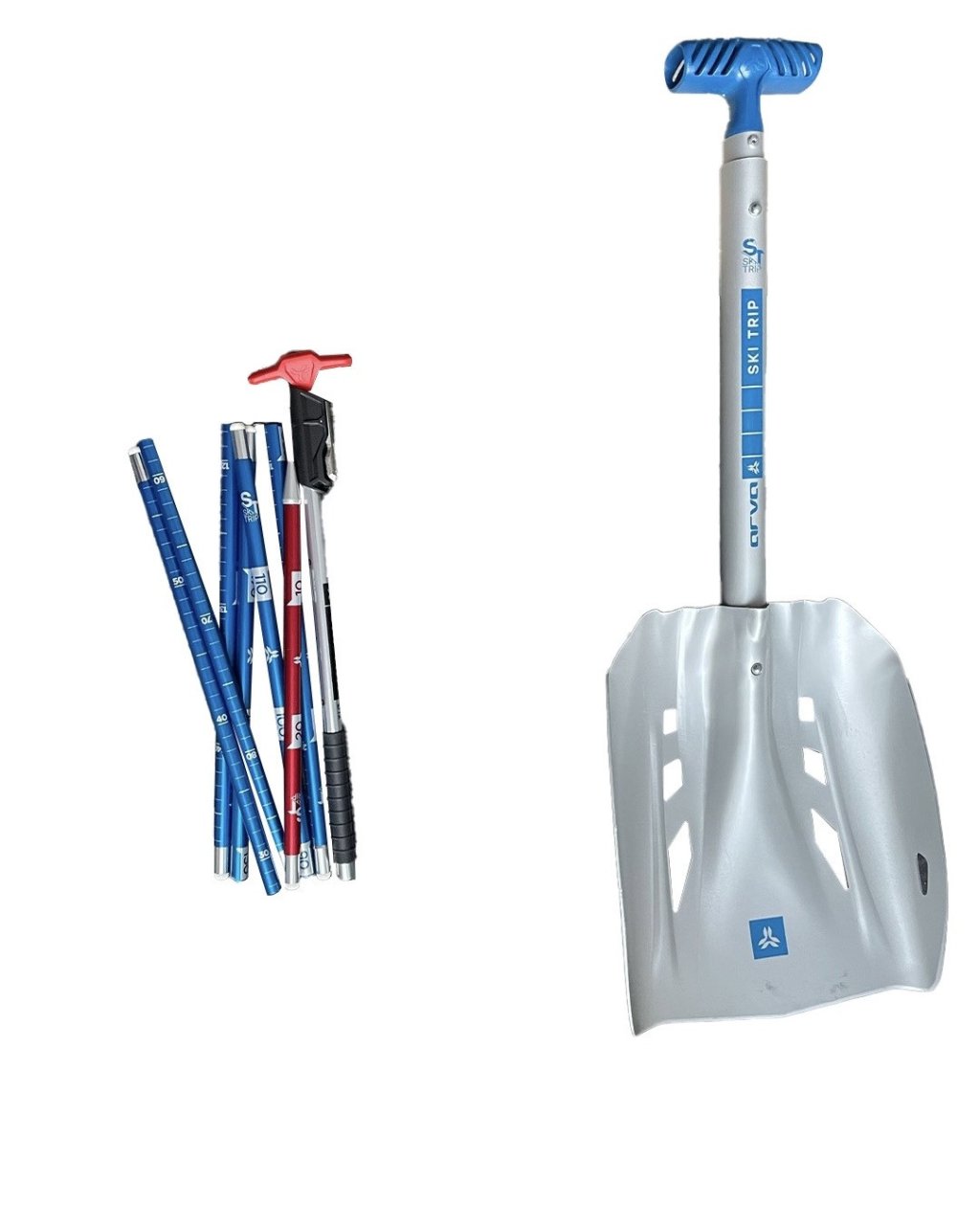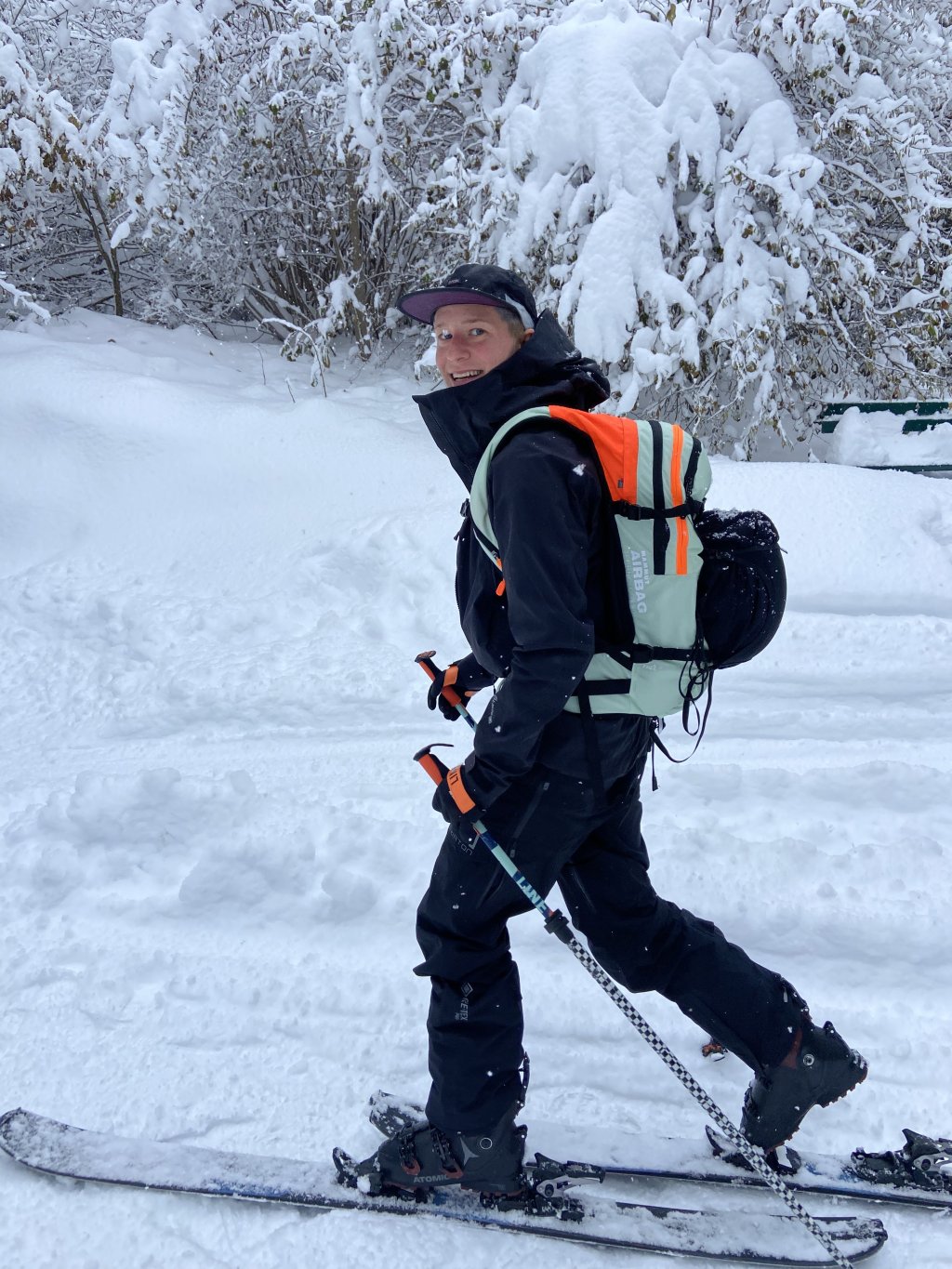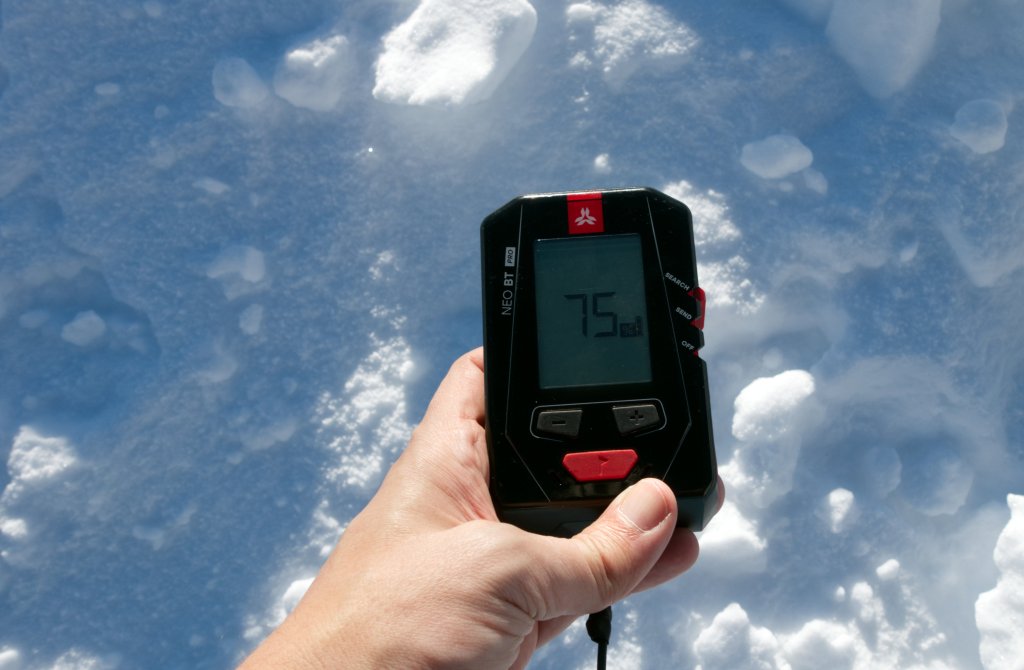Testers and test conditions
Finding and riding fresh deep snow in the mountains has always been my favourite way to spend time on a snowboard. For several years now, this has become my main intention during the winter months, so I have been travelling on the mountain with the necessary safety equipment for the last six to seven years. I take part in an avalanche safety course at least once a year to deepen and refresh my knowledge and also try to learn new things, such as snowpack analyses. This has given me the opportunity to test various devices from different manufacturers. I currently use a Mammut device for my personal fun in the Alps.
The first impression
The Arva SKITRIP avalanche safety set consists of an EVO5, a 240 probe and a shovel. The beacon feels very good in the hand. It is light, compact and my thumb reaches all the buttons, giving me the feeling that I am using a smartphone rather than a beacon. However, what immediately catches my eye is the rather small display. But maybe I'm just used to something different from my own device.
Otherwise, there are hardly any special features compared to other devices. There is an extra button for the group check and the classic toggle switch for the different modes Off, Send and Search on the right edge. This is where I noticed the first small negative point, as the toggle switch cannot really be navigated precisely between the modes. It takes a lot of force to switch between the modes and at the same time a lot of sensitivity, as otherwise the switch quickly slips into the outer modes (Off or Search).
The group check via the button, on the other hand, works intuitively and I was able to locate several devices very precisely on different occasions. If an error occurs, the audio frequency of the device changes briefly. The frequency deviation is detected and signalled both acoustically and visually.
The Arva Evo5 avalanche transceiver does not come with a dedicated holder, so it has to be stowed in your trousers or similar, but I personally don't mind this. The device is so light and small that it can easily be stowed in suitable pockets on the body.
From a technical point of view, Arva claims to have developed a device that is small and light without compromising on technology. In addition to the features mentioned above, the Evo5 has the function of identifying and marking several buried victims, whereby up to three beacons can be displayed. The device also displays a "+" symbol, which indicates additional buried victims.
The device is not only able to control transmission frequencies, which above all avoids interference, but also dynamically manages interference (caused by electrical waves from smartphones, for example). For this purpose, the device in search mode automatically reduces the search strip width from 50 m to 20 m in order to focus on the signal of the avalanche transceiver being searched for, to block out interference frequencies and guarantee a precise search.
The automatic return to transmission mode in the event of secondary avalanches is activated by a timer or a motion detector. This provides an additional level of safety in the event that another avalanche is triggered during the search and the person searching is buried. Another practical feature is the so-called U-turn display, which quickly helps with orientation, especially at the start of a search, and instructs you to change the direction of the search.
Shovel and probe
The SKITRIP avalanche transceiver pack box also includes a shovel and probe of the same name. The set costs RRP 379 € and is therefore in the mid-price segment. At 620 g, the aluminium shovel is in the light to medium range. The telescopic function makes it possible to extend the shovel between 62 cm and 76 cm. The 240 SKITRIP probe is, as the name suggests, 240 mm long. It can be divided into eight 30 cm long segments, which enables it to have a small pack size.
